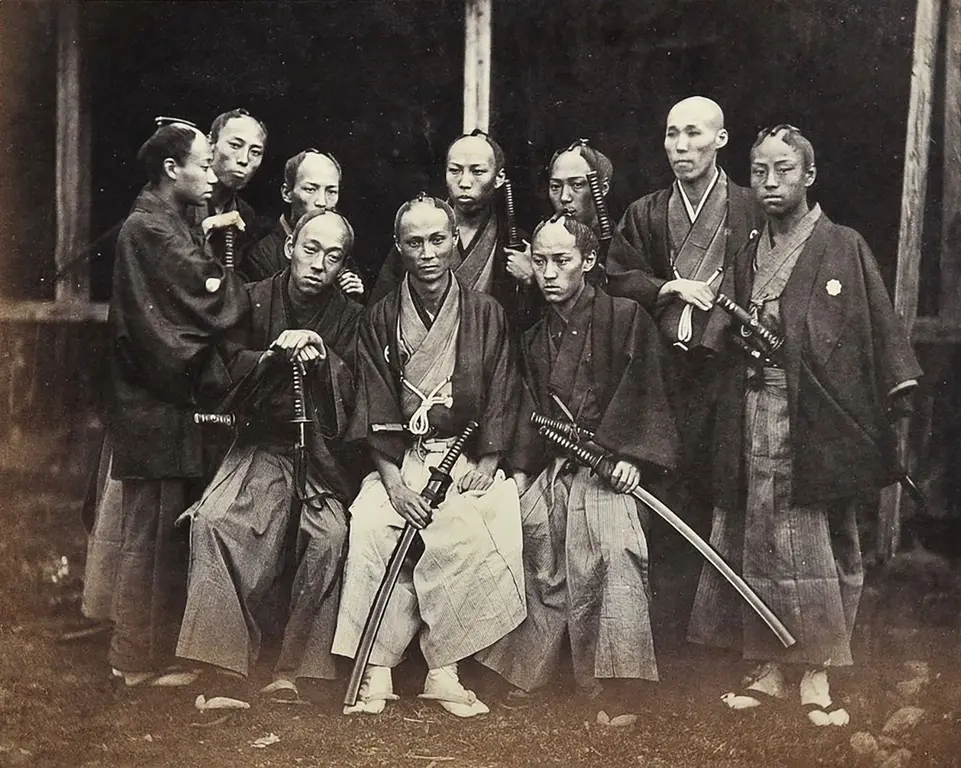The samurai were one of the four social classes in Japanese society. They were highly trained soldiers who were skilled in the use of both bows and swords. The samurai were an essential part of Japanese armies during the feudal period.

The original meaning of the word ‘samurai’ came from the verb “saburau,” which meant ‘to serve’. Samurai who were born into a high-ranking samurai family or who had substantial financial resources were more likely to rise through the ranks than those who did not.
Samurai and samurai culture, with their fascinating Samurai Weapons has been excessively romanticized since the 18th century as the epitome of chivalry and honor, but there are many examples of them displaying great courage and loyalty to their masters. In particular, even committing ritual suicide in the event of the defeat or death of their lord.
Stages of Becoming a Samurai
The stage of becoming a Samurai starts with the rigorous training of a samurai warrior which begins in their childhood only. Samurai school was a unique combination of physical training, Chinese studies, poetry, and spiritual discipline.
The young warriors studied Kendo (“the Way of the Sword”), the moral code of the samurai, and Zen Buddhism. Samurai were expected to live according to Bushido (“The Way of the Warrior”), a strict ethical code influenced by Confucianism that stressed loyalty to one’s master, and respect for one’s superior.
The samurai attached great importance to the circumstances of their death. If a samurai died of his own accord, it was considered a valiant end. Rather than suffer defeat or humiliation at the hands of an enemy, samurai warriors often chose ritual suicide (called seppuku). To attain a higher rank, a samurai needed to display loyalty, bravery, and skills in the battles.
The Samurai Ranks
The Samurai are mostly divided into 4 ranks, which are categorized from lowest to highest ranking as Gokenin, Hatamoto, Daimyo, and Shogun.
Gokenin
The lowest rank of samurai who served a daimyo directly. Gokenin were typically granted a small land and were responsible for protecting the lord’s lands and fighting in battles.
In the Kamakura Period, Gokenin earned their title by participating in an initiation ceremony, taking an oath, and signing their loyalty in a special registry called the Myobu.
Hatamoto
The higher-ranked Hatamoto known as ome-mie ijo were allowed to seek audience with the Daimyo or Shogun. Hatamoto received a similar income to the slightly lower-ranked Go-kenin.
There were two types of Hatamoto, the Kuramai-tori, whose stipend came direct from the shogun or Daimyo, and the Jikata-tori who had income from lands in various regions. Hatamoto were given larger lands and greater responsibilities than gokenin and were considered to be elite samurai.
Daimyo
The highest rank a samurai could attain was to become a feudal lord who ruled over their own territories. Daimyo were responsible for raising armies, collecting taxes, and maintaining order in their territories.
They were ranked according to their income, and categorized into Shinpan (those related to the Tokugawa), Fudai (having been vassals or allies), and the Tozama (those not traditionally allied to the Tokugawa, but not necessarily former enemies). The Fudai were allowed government positions, while the Tozama were not.
Shogun
The highest-ranking military officer in Japan held supreme authority over the samurai and the country as a whole. To become a Shogun, one must have family lineage to the noble Minamoto family.
Shoguns were the hereditary military leaders who were technically appointed by the emperor. A series of three major shogunates (Kamakura, Ashikaga, Tokugawa) led Japan for most of its history from the century 1192.
